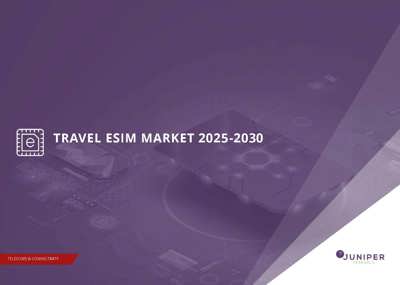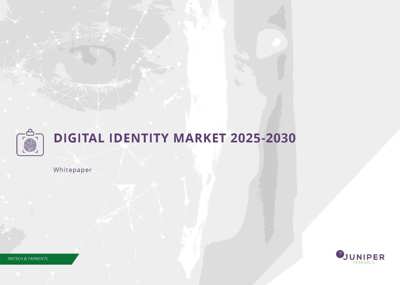5G SA Adoption is Surging in the UK — What This Means for Consumers
In November 2025, Ofcom released its Connected Nations UK Report; highlighting that 5G Standalone (SA) now accounts for approximately 31% of total 5G traffic in the UK. This means that 5G SA accounts for around 9% of cellular traffic now in UK, or 109PB of traffic. The growth in 5G SA traffic was part of a broader growth in 5G traffic, which grew by 53% in the past year from 227 PB to 348 PB.
5G NSA and 5G SA Traffic in the UK, 2024 vs. 2025
 Source: Ofcom
Source: Ofcom
What is 5G SA and NSA?
5G SA is the next stage of 5G development; operating independently from 4G infrastructure, unlike 5G non standalone (NSA). The two technologies can be defined as the following:
- 5G NSA – this technology relies on the existing Evolved Packet Core (EPC) of 4G Long Term Evolution (LTE) networks, with 5G Radio Access Network (RAN) and the NR (New Radio) interface being used alongside the EPC.
- 5G SA – this technology, as 5G NSA, relies on 5G RAN and NR, however instead of the 4G LTE EPC, it relies on a 5G core. This enables the technology to offer improvements to KPIs (Key Performance Indicators) such as latency.
At present, the majority of 5G traffic in the UK relies on 5G NSA technology, with 69% of 5G traffic being delivered over 5G NSA. Juniper Research expects that both 5G NSA and SA will be critical to the UK mobile services market over the next five years, with 5G SA continuing to grow as a share of mobile network and 5G traffic. 5G NSA will remain important as it provides mobile network operators concentrating 5G SA expansion in high value locations such as urban areas. This can be seen in Ofcom’s reporting on 5G site deployment in the table below.
5G Site Statistics, 2024 and 2025

Source: Ofcom
Ofcom’s Update on 5G SA in the UK
Juniper Research believes that the growth in 5G SA traffic demonstrates how mobile network operators in the UK are beginning to accelerate their 5G SA strategies. According to Ofcom, 5G coverage in areas outside of premises where service is available from at least one MNO has reached 83% at a high confidence and 74% at a very high confidence. High confidence means at least an 80% probability of coverage, whilst very high confidence refers to around a 95% probability of coverage.
This is reflective of the expansion in 5G SA infrastructure, with mobile network operators having significantly expanding their deployments of 5G SA base stations. In the past year, the total number of 5G SA base stations grew from 3,300 to over 12,000, meaning 5G SA base stations now account for over 14% of total base stations in the UK.
Juniper Research expects that mobile network operators in the UK will continue to expand the coverage of 5G SA in 2026, with continued investment in upgrading or adding new base stations; positioning the UK market for further growth in 5G SA traffic. This will enable mobile network operators to deliver advanced connectivity to an increasing proportion of the population, and increasing the value of their existing 5G SA users through expanded coverage.
Is 5G SA Usage in the UK Primed for Growth?
Despite the growth in 5G SA traffic and capacity, Juniper Research believes traffic continues to lag behind the potential demand from mobile subscribers. Ofcom reports that 63% of 5G handsets is now 5G SA-capable in the UK, with 66% of mobile handsets being 5G capable. This means that whilst around 42% of mobile handsets in the UK is capable of supporting 5G SA, only 9% of the cellular traffic generated in the UK relies on 5G SA.
While part of this disparity is due to Fixed Wireless Access (FWA) deployments relying on 5G NSA, when accounting for this, Juniper Research believes that there is likely a strong disconnection between 5G SA capable mobile handsets, and actual usage. Consequently, Juniper Research believes that mobile subscribers will quickly be able to adopt the technology; laying the foundation for rapid growth.
However, mobile network operators will face considerable challenges when monetising the improved performance offered by 5G SA, with consumers in particular reluctant to increase mobile subscription costs.
To be successful in monetising 5G SA with consumers, Juniper Research believes that mobile network operators must not only pursue strategies oriented on the faster speeds and lower latency offered by the technology. 5G NSA and 4G are sufficient for most mobile services use cases, such as social media; diminishing the value of 5G SA.
Juniper Research believes that opportunities to monetise the additional capabilities of 5G SA amongst consumers will be more niche than in the enterprise market, however there will be opportunities. For example, there is potential for consumers to pay for additional uplink for major events they wish to broadcast video and audio from, as well as amongst mobile subscribers who work as influencers and frequently broadcast livestreams. Similarly, while gaming is unlikely to emerge as the market it was initially hyped to be, there will likely be niche demand from online gamers seeking to remain connected via mobile networks.
Overall, Juniper Research expects there to be considerable expansion in the 5G SA network capacity and availability, with traffic over 5G SA continuing to see strong growth over the next year. However, Juniper Research does not expect there to be a single killer use case for 5G SA amongst mobile subscribers, with cellular data growth unlikely to be driven by flashy use cases such as augmented reality. Instead, mobile network operators need to adopt diversified and more personalised strategies for their 5G SA monetisation; using technologies such as network slicing to deliver optimised services for subsections of mobile subscribers.
Alex is a Senior Research Analyst within Juniper Research’s Telecoms & Connectivity team, focusing on the latest developments in operator and telecommunications markets. His recent reports include Direct to Satellite, Network APIs, and Cellular IoT.
Latest research, whitepapers & press releases
-
 ReportDecember 2025Fintech & Payments
ReportDecember 2025Fintech & PaymentseCommerce Fraud Prevention Market: 2025-2030
Our eCommerce Fraud Prevention research suite provides a detailed and insightful analysis of this evolving market; enabling stakeholders from financial institutions, law enforcement agencies, regulatory bodies and technology vendors to understand future growth, key trends, and the competitive environment.
VIEW -
 ReportNovember 2025Telecoms & Connectivity
ReportNovember 2025Telecoms & ConnectivityeSIMs & iSIMs Market: 2025-2030
Juniper Research’s eSIMs and iSIMs research suite offers insightful analysis of a market set to experience significant growth in the next five years. The research suite provides mobile network operators (MNOs), original equipment manufacturers (OEMs), and eSIM management and platforms vendors with intelligence on how to capitalise on the market growth, and guidance on how eSIM-only devices and sensors, SGP.42, in-factory provisioning, and iSIMs will change the competitive landscape.
VIEW -
 ReportNovember 2025Fintech & Payments
ReportNovember 2025Fintech & PaymentsModern Card Issuing Platforms Market: 2025-2030
Our Modern Card Issuing Platforms Market research suite provides a detailed and insightful analysis of this evolving market; enabling stakeholders from banks, financial institutions, fintech companies, and technology vendors to understand future growth, key trends, and the competitive environment.
VIEW -
 ReportNovember 2025Fintech & Payments
ReportNovember 2025Fintech & PaymentsDigital Wallets Market: 2025-2030
Our digital wallets research suite provides detailed analysis of this rapidly changing market; allowing digital wallet providers to gain an understanding of key payment trends and challenges, potential growth opportunities, and the competitive environment.
VIEW -
 ReportOctober 2025Fintech & Payments
ReportOctober 2025Fintech & PaymentsDigital Identity Market: 2025-2030
Juniper Research’s Digital Identity research suite provides a comprehensive and insightful analysis of this market; enabling stakeholders, including digital identity platform providers, digital identity verification providers, government agencies, banks, and many others, to understand future growth, key trends, and the competitive environment.
VIEW -
 ReportOctober 2025Telecoms & Connectivity
ReportOctober 2025Telecoms & ConnectivityTravel eSIM Market: 2025-2030
Our comprehensive Travel eSIMs research suite comprises detailed assessment of a market undergoing rapid growth. It provides insight into how travel eSIM providers can differentiate their services to maximise success in the market over the next two years.
VIEW
-
 WhitepaperNovember 2025Telecoms & Connectivity
WhitepaperNovember 2025Telecoms & ConnectivityeSIM-only Devices: The Impact on Operators, Consumers, and IoT
Our complimentary whitepaper, eSIM-only Devices: The Impact on Operators, Consumers, and IoT, explores the challenges and opportunities for the three segments, with a particular focus on eSIM-only smartphones and SGP.42.
VIEW -
 WhitepaperNovember 2025Fintech & Payments
WhitepaperNovember 2025Fintech & PaymentsUnlocking the Next Stage of Growth for Modern Card Issuing Platforms
This free whitepaper analyses key trends shaping the modern card issuing space, and the ways in which modern card issuing platforms can capture growth.
VIEW -
 WhitepaperNovember 2025Fintech & Payments
WhitepaperNovember 2025Fintech & PaymentsTop 10 Fintech & Payments Trends 2026
Fintech is evolving fast. From stablecoins to agentic AI, our annual guide reveals the shifts redefining payments, digital identity, and the future of money in 2026. Download your copy today.
VIEW -
 WhitepaperNovember 2025Fintech & Payments
WhitepaperNovember 2025Fintech & PaymentsDigital Wallets: Empowering Financial Inclusivity
Our complimentary whitepaper, Digital Wallets: Empowering Financial Inclusivity, examines the state of the digital wallets market; considering the impact of digital wallets on different geographies, how they are shaping the modern payments landscape through lower transaction fees and promoting financial inclusivity for underbanked populations, and how they are competing with established payment methods.
VIEW -
 WhitepaperNovember 2025Telecoms & Connectivity
WhitepaperNovember 2025Telecoms & ConnectivityTop 10 Telecoms & Connectivity Trends 2026
The next phase of telecoms isn’t coming — it’s already here. From AI agents to new network models, our guide shows what’s changing right now and how it’s transforming the business of connectivity. Download your copy today.
VIEW -
 WhitepaperOctober 2025Fintech & Payments
WhitepaperOctober 2025Fintech & PaymentsHow Digital Identity is Going Mainstream
Our complimentary whitepaper, How Digital Identity is Going Mainstream, assesses the trends that are moving digital identity to be increasingly popular, and challenges to digital identity growth.
VIEW
-
Fintech & Payments
AML Adoption to Hit 3.8 Million Businesses Globally by 2030, With Europe at the Forefront
November 2025 -
Telecoms & Connectivity
eSIM Connections to Grow 300% Globally in Next 5 Years, as China Presents Instant Opportunities
November 2025 -
Fintech & Payments
Cross-border A2A Transactions to Surpass 11 Billion in 2026 Globally, Thanks to Enhanced Interoperability
November 2025 -
Fintech & Payments
Modern Card Issuing Platforms Market to Surpass $4.2 Billion by 2030, as Juniper Research Reveals Global Leaders Driving Fintech Innovation
November 2025 -
Fintech & Payments
Juniper Research Unveils the Top 10 Trends Set to Shape Fintech & Payments in 2026
November 2025 -
Fintech & Payments
Digital Wallet Users to Surpass Three Quarters of Global Population by 2030
November 2025


























